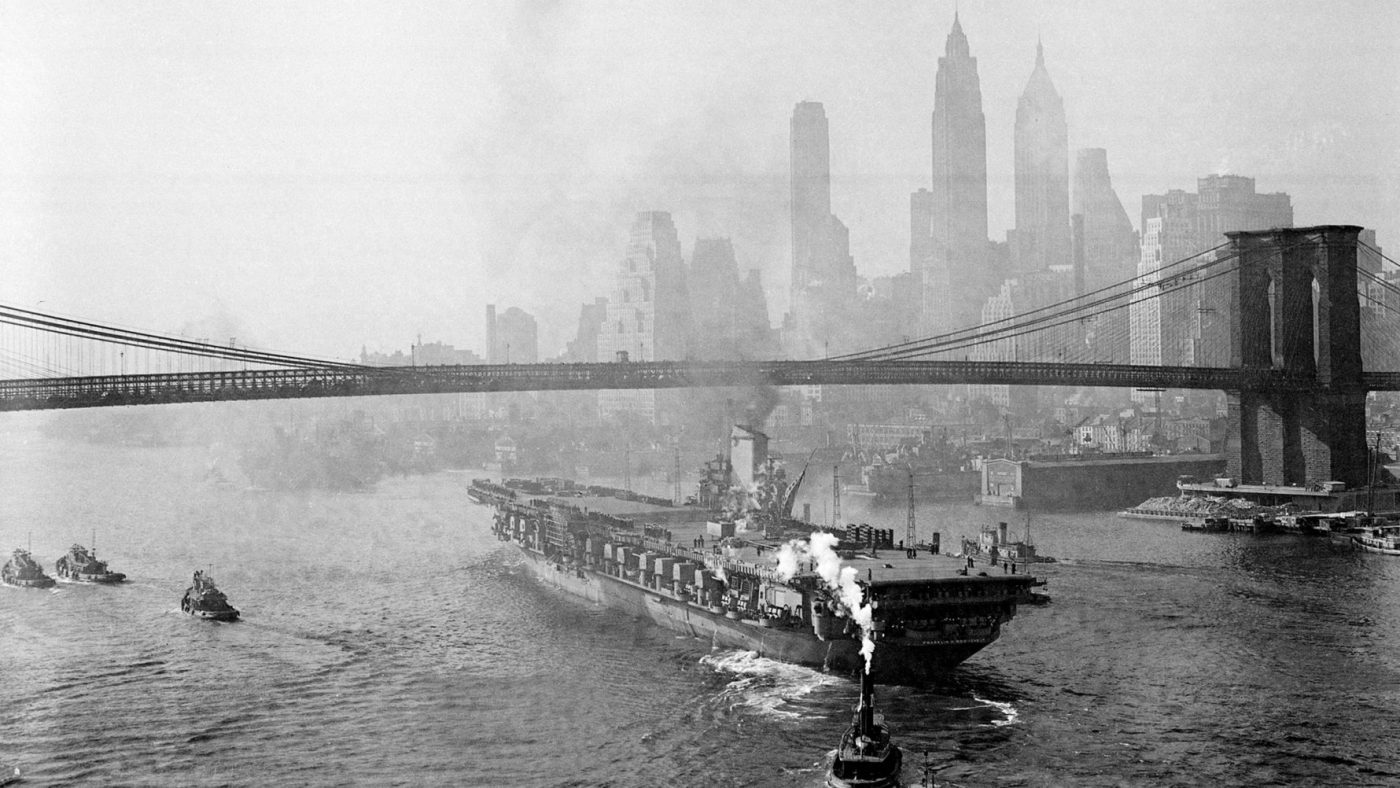There are advantages to reviewing a book a little late if you’re impure enough to read other people’s take on things: having heard arguments for and against, often equally persuasive, you’re intrigued to know which sketch is most accurate for you. Having digested opinions on Jennifer Egan’s latest, I wasn’t sure whether to expect a Manhattan Beach of luminous prose that channels the best of the Victorian novel form to reveal how we are trapped in the power structures that support us, or a Manhattan Beach that would disappoint me as a fan of Egan’s last novel (the multi-voiced time-hopping A Visit from the Good Squad) due to its over-researched, cliché-laden, historical ploddingness.
It is certainly historical, spanning a slice of US time that has been much written about, from the Great Depression to the end of the Second World War. Eddie Kerrigan works in New York as a bagman for the Irish-mob-controlled Dockers’ Union before beginning a more lucrative gig for a leading mafioso, Dexter Styles. Styles makes a mint in the clubs during prohibition and afterwards, in the wartime boom; married to a rich socialite, he hovers on the cusp of respectability. Anna Kerrigan, Eddie’s daughter, and the heart of the book, helps her mother tend her disabled sister Lydia. After her father disappears, she earns income for the family by checking parts for warships, eventually – and against considerable odds – becoming a diver. Egan’s three protagonists are trapped, whether by syndicates or societal expectations. The ocean, and the flux and fissures of war, provide potential for an out.

Jennifer Egan’s Manhattan Beach
There is something of the Victorian novel in Egan’s heroine, negotiating her way in a society at odds with her desires (an affinity with George Eliot made especially clear by the watery backdrop). It’s easy to root for her. It’s harder to unpick Eddy and Dexter, back-storied though they are. The former is hyper-composed, enigmatic, smart enough to survive gangsters and the worst the elements can throw at him, and yet he is unable to cope with his youngest daughter’s vulnerability. And despite reminders that the latter is a cold-blooded, brilliantined murderer the narrator who looks over his shoulder has the kind of refined sensibility that makes his brutishness feel unreal. When Dexter talks to his father-in-law about going legit, you feel it is really Dexter who is observing his surroundings with such lyricism:
“I’m on the wrong side.”
Music crackled like a distant phonograph through bursts of glacial wind. Otherwise, they might have been standing at the end of the earth: a gray-black landscape of water and ice.
“Right and wrong are relative terms, aren’t they, in your line of work?” the old man asked.
This sensitivity seems at odds with the gangster we see elsewhere, flanked by his goons in the back room of his nightclub, or casually instructing the murder of a hapless family man who’s crossed him. Perhaps that’s Egan’s point: character is inconsistent, as murky as the silted shallows. However, it does makes you wonder just who you’re dealing with across these 400 pages.
As to whether or not the movement of this plot is weighed down by too much detail, it is true that the legwork Egan has put in is not entirely invisible: reading the first couple of chapters I was distracted by the density of references to specific brands, cuts of clothes, and dialogue plucked from the movies – “capeesh?” However, this irritation swiftly faded, because Egan is very good at making rich detail part of lived experience rather than set dressing. When Anna is proving herself in a world of structures assembled for men, when she first walks the harbour floor in the heavy diving suit, or unties a sailors’ knot whose point of weakness is like “the faint, incipient bruise on an apple”, it becomes clear that the machinery of the world around us is part of who we are. Whether or not this extends to the reader needing to know that the air nozzle of Anna’s diving suit is star-shaped is moot. The world of Manhattan Beach is richly evoked, but occasionally succumbs to genre tics and the urge not to waste good research. C





